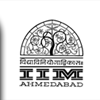|
- Definition:
Nano-RAM, is a proprietary computer memory technology from the company Nantero and NANOMOTOR is invented by University of bologna and California nano systems.NRAM is a type of nonvolatile random access memory based on the mechanical position of carbon nanotubes deposited on a chip-like substrate. In theory the small size of the nanotubes allows for very high density memories. Nantero also refers to it as NRAM in short, but this acronym is also commonly used as a synonym for the more common NVRAM, which refers to all nonvolatile RAM memories.Nanomotor is a molecular motor which works continuously without the consumption of fuels. It is powered by sunlight. The research are federally funded by national science foundation and national academy of science.
Carbon Nanotubes
Carbon nanotubes (CNTs) are a recently discovered allotrope of carbon. They take the form of cylindrical carbon molecules and have novel properties that make them potentially useful in a wide variety of applications in nanotechnology, electronics, optics, and other fields of materials science. They exhibit extraordinary strength and unique electrical properties, and are efficient conductors of heat. Inorganic nanotubes have also been synthesized.
A nanotube is a member of the fullerene structural family, which also includes buckyballs. Whereas buckyballs are spherical in shape, a nanotube is cylindrical, with at least one end typically capped with a hemisphere of the buckyball structure. Their name is derived from their size, since the diameter of a nanotube is on the order of a few nanometers (approximately 50,000 times smaller than the width of a human hair), while they can be up to several millimeters in length. There are two main types of nanotubes: single-walled nanotubes (SWNTs) and multi-walled nanotubes (MWNTs).
Manufacturing a nanotube is dependent on applied quantum chemistry, specifically, orbital hybridization. Nanotubes are composed entirely of sp2 bonds, similar to those of graphite. This bonding structure, stronger than the sp3 bonds found in diamond, provides the molecules with their unique strength. Nanotubes naturally align themselves into "ropes" held together by Van der Waals forces. Under high pressure, nanotubes can merge together, trading some sp2 bonds for sp3 bonds, giving great possibility for producing strong, unlimited-length wires through high-pressure nanotube linking.
Fabrication Of NRAM
This nano electromechanical memory, called NRAM, is a memory with actual moving parts, with dimensions measured in nanometers. Its carbon nanotube based technology makes advantage of vaanderwaals force to create basic on off junctions of a bit. Vaanderwaals forces interaction between atoms that enable noncovalant binding. They rely on electron attractions that arise only at nano scale levels as a force to be reckoned with. The company is using this property in its design to integrate nanoscale material property with established cmos fabrication technique.
Storage In NRAM
NRAM works by balancing the on ridges of silicon. Under differing electric charges, the tubes can be physically swung into one or two positions representing one and zeros. Because the tubes are very small-under a thousands of time-this movement is very fast and needs very little power, and because the tubes are a thousand times conductive as copper it is very to sense to read back the data. Once in position the tubes stay there until a signal resets them.
The bit itself is not stored in the nano tubes, but rather is stored as the position of the nanotube. Up is bit 0 and down is bit 1.Bits are switched between the states by the application of the electric field.
The technology work by changing the charge placed on a latticework of crossed nanotube. By altering the charges, engineers can cause the tubes to bind together or separate, creating ones and zeros that form the basis of computer memory. If we have two nano tubes perpendicular to each other one is positive and other negative, they will bend together and touch. If we have two similar charges they will repel. These two positions are used to store one and zero. The chip will stay in the same state until you make another change in the electric field. So when you turn the computer off, it doesn't erase the memory .We can keep all the data in the NRAM and gives your computer an instant boot.
|












